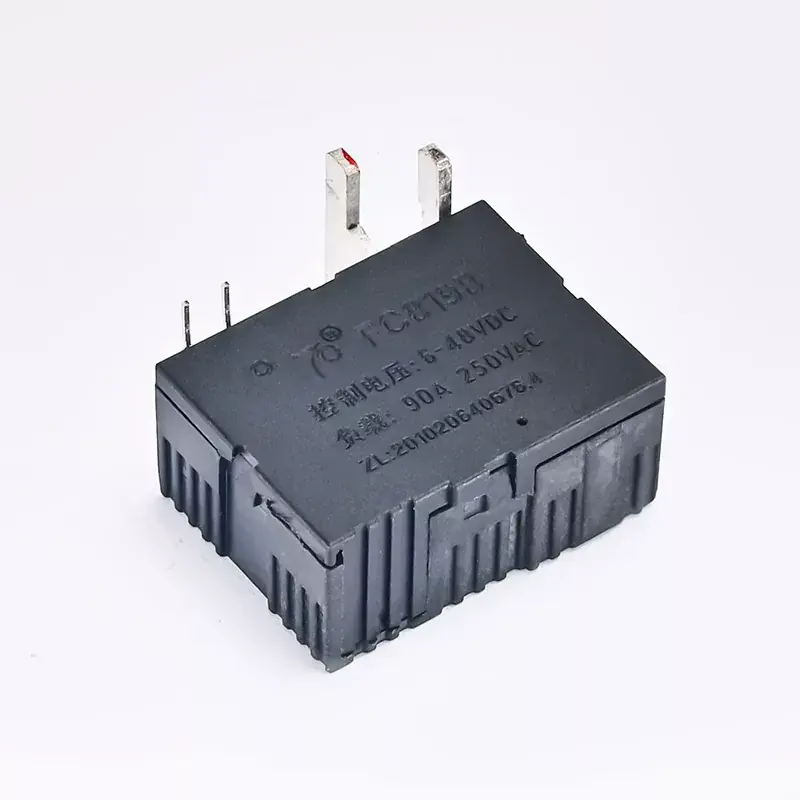What is an Equipment Control System Latching Relay and How Does it Work?
2025-01-10
In modern industrial and electrical systems, relays play a crucial role in controlling high-voltage circuits with low-voltage control signals. Among these, Equipment Control System Latching Relays stand out for their ability to maintain their state even when the control signal is removed. This unique feature makes them indispensable in applications requiring long-term stability without continuous power consumption.
In this blog, we will explore the concept of a latching relay, how it works, and its importance in modern control systems.
What is a Latching Relay?
A latching relay, also known as a bistable relay, is an electromechanical switch that retains its position (either open or closed) without requiring continuous power to the control coil. Unlike standard relays, which revert to their default state once the control signal is removed, latching relays remain in their last state until a new control signal is applied.
Latching relays have two stable states—each representing a different position of the switch. To change the state of the relay, a short pulse is sent to the coil, which toggles the state of the relay. These relays are ideal for applications that require the relay to hold its state even when the control signal is no longer active.
Key Features of Latching Relays
1. Energy Efficiency
One of the primary advantages of a latching relay is that it does not require continuous power to maintain its state. Once it is switched, it "latches" into position, and only a brief pulse of energy is needed to change states. This significantly reduces energy consumption, making latching relays ideal for power-sensitive applications.
2. Long-Term Stability
Latching relays are designed to hold their state for extended periods, making them reliable in situations where a relay needs to maintain its position without fluctuation. This feature is especially useful in control systems that require stable and secure operation without the risk of accidental resetting.
3. Reduced Heat Generation
Since the coil is only energized momentarily, latching relays generate less heat compared to traditional relays, which require continuous current to maintain their state. This makes latching relays more efficient and less prone to overheating.
4. Durability and Reliability
Latching relays typically feature a mechanical design that can endure millions of operations without failure. Their rugged construction makes them suitable for harsh environments, including industrial settings.
How Does a Latching Relay Work?
A typical latching relay consists of two main components: the coil and the switching mechanism. The coil is energized by an electrical pulse that either sets or resets the relay to its latching position.
- Set Pulse: When a brief electrical pulse is applied to the coil in a specific direction, the relay's internal mechanism shifts to one of its stable states (e.g., closing the switch).
- Reset Pulse: A second pulse, typically applied in the opposite direction, causes the relay to return to its default state (e.g., opening the switch).
Once latched, the relay remains in the current state without additional power, only changing when another pulse is sent. This process allows the relay to function as a memory device, retaining its state even when the system is powered down or when there is no continuous input.
Applications of Equipment Control System Latching Relays
1. Control Systems for Industrial Automation
Latching relays are commonly used in industrial automation systems, where they control the operation of machines, robots, or other equipment. Their ability to maintain a state without requiring constant power makes them ideal for systems that need to operate efficiently and without excessive energy use.
2. Consumer Electronics
In consumer electronics like home automation systems, latching relays can be used to control lighting, thermostats, or security systems. The ability to hold the state after activation ensures that devices remain in the desired mode (e.g., "on" or "off") without requiring constant energy consumption.
3. Automotive Applications
In automotive systems, latching relays are used for controlling locks, lights, and alarms. For instance, once the car door lock is activated, the relay latches, maintaining the locked state without continuous current flow, improving energy efficiency in the vehicle.
4. Power Distribution Systems
Latching relays are frequently used in power distribution to control switching operations for circuits. They allow operators to control electrical flow with minimal power usage, essential in maintaining efficient operation in substations and grids.
5. Telecommunication Systems
Latching relays also find use in telecommunications systems for switching high-power lines. Their ability to hold a state without drawing continuous power is especially beneficial in long-distance signal transmission equipment.
Equipment Control System Latching Relays are indispensable components in many modern electrical and control systems. Their ability to maintain a stable state without continuous power not only improves energy efficiency but also enhances the reliability of complex systems. With applications spanning industrial automation, automotive, telecommunications, and more, latching relays are proving to be a critical piece of technology for industries seeking to reduce energy consumption while maintaining high-performance control.



